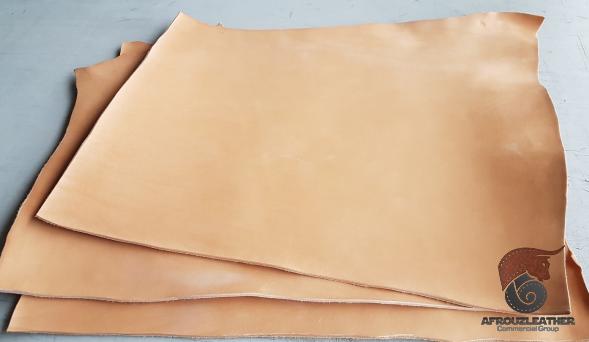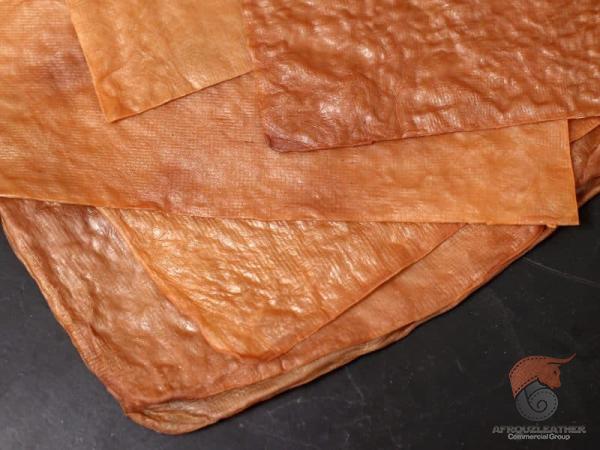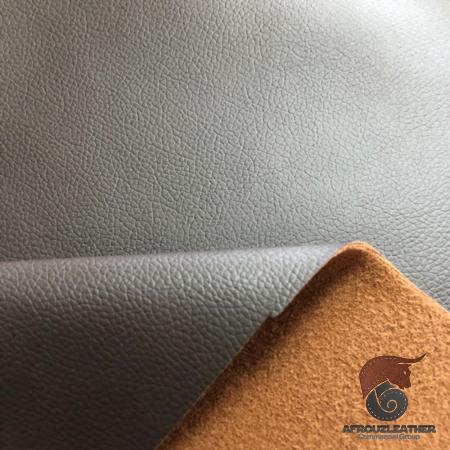Leather is a highly sought-after material due to its durability, versatility, and luxurious feel. When it comes to leather, lamb leather and sheep leather are two popular options. While both share some similarities, they also possess distinct characteristics that distinguish them from one another. This article aims to delve into the nuances of lamb leather and sheep leather, outlining their differences in terms of production methods, texture, features, and applications. 1. Production Methods: Lamb leather and sheep leather are derived from different animals and are produced using separate processes. Lamb leather comes from lambs that are less than one year old, whereas sheep leather is obtained from mature sheep. This age difference affects the texture and quality of the respective leathers. Lambskin has a finer grain and tends to be more supple, while sheepskin has a somewhat coarser texture. 2. Texture and Feel: Lamb leather is known for its exceptionally soft and supple nature, making it highly sought after for various luxury applications. The young age of lambs results in a finer grain, resulting in a smoother surface that is often described as buttery and velvety. In contrast, sheep leather has a slightly coarser texture due to the more prolonged exposure to the environment and rigorous activity of mature sheep. 3. Durability and Strength: Sheep leather tends to be tougher and more durable than lamb leather due to the longer exposure of the animal to the elements. The physical activities of mature sheep often lead to the formation of a denser grain pattern, which provides greater resistance to wear and tear. On the other hand, lamb leather, while softer, might be more prone to scratches and damage. 4. Appearance: The appearance of lamb leather versus sheep leather also differs slightly. Lamb leather is known for its delicate and refined look, with a smooth surface that enhances the natural luster of the material. It often exhibits a uniform color and a subtle sheen. In contrast, sheep leather offers a more rugged and textured appearance, with its grain pattern giving it a distinctive character. Sheep leather can have a more natural and rustic appeal, adding depth to various products. 5. Applications: The unique qualities of lamb leather and sheep leather make them suitable for different applications. Lamb leather is often preferred in high-end fashion, luxury accessories, and upholstery due to its softness and drape. It is commonly used for items such as gloves, jackets, handbags, and footwear. Sheep leather, with its durability and strength, finds applications in products requiring resilience and stiffness, such as belts, furniture upholstery, and car interiors. 6. Price: The pricing of lamb leather and sheep leather is influenced by various factors, including the production process, quality, and demand. Lamb leather typically commands higher prices due to its softer texture, fine grain, and association with luxury brands. Sheep leather, being more readily available, is relatively less expensive. However, the prices of both leathers can vary significantly depending on the brand, design, and overall quality. 7. Care and Maintenance: Proper care and maintenance play a crucial role in preserving and prolonging the lifespan of lamb leather and sheep leather products.
leather
 Due to their softness, lamb leather items require extra attention to avoid scratches, water damage, and stains. Specialized leather cleaners and conditioners should be used to maintain the suppleness and appearance of lamb leather. Sheep leather, being more resilient, can handle regular leather care products and procedures. However, both leathers should be kept away from direct sunlight and excessive heat to prevent drying and cracking. Conclusion: In summary, lamb leather and sheep leather offer unique characteristics that cater to different needs and preferences. Lamb leather stands out for its exceptional softness, supple texture, and refined appearance, making it an excellent choice for luxury fashion and accessories. On the other hand, sheep leather possesses a more rugged texture, greater durability, and affordability, making it suitable for practical applications that require resistance to wear and tear. Ultimately, the choice between lamb leather and sheep leather depends on individual preferences, desired aesthetics, and the intended use of the final product. Lamb Leather vs Sheep Leather: Understanding the Key Differences Introduction: Leather is a highly sought-after material due to its durability, versatility, and luxurious feel. When it comes to leather, lamb leather and sheep leather are two popular options. While both share some similarities, they also possess distinct characteristics that distinguish them from one another. This article aims to delve into the nuances of lamb leather and sheep leather, outlining their differences in terms of production methods, texture, features, and applications. 1. Production Methods: The production methods for lamb leather and sheep leather differ based on the age of the animal. Lamb leather is obtained from lambs less than one year old. The lambs are generally raised for their meat, and their hides are a byproduct of the process. On the other hand, sheep leather is derived from mature sheep that have typically reached the end of their breeding or lifestyle cycle. The hides are harvested after the animals have been processed for meat, wool, or other purposes. 2. Texture and Feel: One of the primary differences between lamb leather and sheep leather lies in their texture and feel. Lamb leather is highly regarded for its exceptionally soft and supple nature. The young age of lambs results in a finer grain, leading to a smoother surface that is often described as buttery and velvety. In contrast, sheep leather has a slightly coarser texture due to the more prolonged exposure of mature sheep to the environment and their rigorous physical activities. 3. Durability and Strength: Another significant distinction between lamb leather and sheep leather is their durability and strength. Due to the longer exposure of mature sheep to the elements and their active lifestyles, sheep leather tends to be tougher and more durable. The physical activities of mature sheep contribute to the formation of a denser grain pattern, providing greater resistance to wear and tear. Lamb leather, although softer, may be more prone to scratches and damage.
Due to their softness, lamb leather items require extra attention to avoid scratches, water damage, and stains. Specialized leather cleaners and conditioners should be used to maintain the suppleness and appearance of lamb leather. Sheep leather, being more resilient, can handle regular leather care products and procedures. However, both leathers should be kept away from direct sunlight and excessive heat to prevent drying and cracking. Conclusion: In summary, lamb leather and sheep leather offer unique characteristics that cater to different needs and preferences. Lamb leather stands out for its exceptional softness, supple texture, and refined appearance, making it an excellent choice for luxury fashion and accessories. On the other hand, sheep leather possesses a more rugged texture, greater durability, and affordability, making it suitable for practical applications that require resistance to wear and tear. Ultimately, the choice between lamb leather and sheep leather depends on individual preferences, desired aesthetics, and the intended use of the final product. Lamb Leather vs Sheep Leather: Understanding the Key Differences Introduction: Leather is a highly sought-after material due to its durability, versatility, and luxurious feel. When it comes to leather, lamb leather and sheep leather are two popular options. While both share some similarities, they also possess distinct characteristics that distinguish them from one another. This article aims to delve into the nuances of lamb leather and sheep leather, outlining their differences in terms of production methods, texture, features, and applications. 1. Production Methods: The production methods for lamb leather and sheep leather differ based on the age of the animal. Lamb leather is obtained from lambs less than one year old. The lambs are generally raised for their meat, and their hides are a byproduct of the process. On the other hand, sheep leather is derived from mature sheep that have typically reached the end of their breeding or lifestyle cycle. The hides are harvested after the animals have been processed for meat, wool, or other purposes. 2. Texture and Feel: One of the primary differences between lamb leather and sheep leather lies in their texture and feel. Lamb leather is highly regarded for its exceptionally soft and supple nature. The young age of lambs results in a finer grain, leading to a smoother surface that is often described as buttery and velvety. In contrast, sheep leather has a slightly coarser texture due to the more prolonged exposure of mature sheep to the environment and their rigorous physical activities. 3. Durability and Strength: Another significant distinction between lamb leather and sheep leather is their durability and strength. Due to the longer exposure of mature sheep to the elements and their active lifestyles, sheep leather tends to be tougher and more durable. The physical activities of mature sheep contribute to the formation of a denser grain pattern, providing greater resistance to wear and tear. Lamb leather, although softer, may be more prone to scratches and damage.
Specifications of leather
 4. Appearance: When it comes to appearance, lamb leather and sheep leather showcase slightly different characteristics. Lamb leather is known for its delicate and refined look, with a smooth surface that enhances the natural luster of the material. It often exhibits a uniform color and a subtle sheen. In contrast, sheep leather offers a more rugged and textured appearance. The grain pattern on sheep leather adds depth and a distinctive character, giving the material a more natural and rustic appeal. 5. Applications: The unique qualities of lamb leather and sheep leather make them suitable for different applications. Lamb leather, with its softness and drape, is often preferred in high-end fashion and luxury accessories. It is commonly used for items such as gloves, jackets, handbags, and footwear. The supple nature of lamb leather allows it to conform to body contours, providing a luxurious feel. Sheep leather, on the other hand, with its durability and strength, finds applications in products requiring resilience and stiffness, such as belts, furniture upholstery, and car interiors. 6. Price: The pricing of lamb leather and sheep leather reflects their differences in quality, availability, and demand. Lamb leather typically commands higher prices due to its softer texture, fine grain, and association with luxury brands. The limited availability of lambskin contributes to its higher price tag. Sheep leather, being more readily available, is relatively less expensive. However, the prices of both leathers can vary significantly depending on the brand, design, and overall quality. 7. Care and Maintenance: Proper care and maintenance are essential for preserving and prolonging the lifespan of lamb leather and sheep leather products. Due to its softness, lamb leather items require extra attention to avoid scratches, water damage, and stains. Specialized leather cleaners and conditioners should be used to maintain the suppleness and appearance of lamb leather. Sheep leather, being more resilient, can handle regular leather care products and procedures. Both leathers should be kept away from direct sunlight and excessive heat to prevent drying and cracking.
4. Appearance: When it comes to appearance, lamb leather and sheep leather showcase slightly different characteristics. Lamb leather is known for its delicate and refined look, with a smooth surface that enhances the natural luster of the material. It often exhibits a uniform color and a subtle sheen. In contrast, sheep leather offers a more rugged and textured appearance. The grain pattern on sheep leather adds depth and a distinctive character, giving the material a more natural and rustic appeal. 5. Applications: The unique qualities of lamb leather and sheep leather make them suitable for different applications. Lamb leather, with its softness and drape, is often preferred in high-end fashion and luxury accessories. It is commonly used for items such as gloves, jackets, handbags, and footwear. The supple nature of lamb leather allows it to conform to body contours, providing a luxurious feel. Sheep leather, on the other hand, with its durability and strength, finds applications in products requiring resilience and stiffness, such as belts, furniture upholstery, and car interiors. 6. Price: The pricing of lamb leather and sheep leather reflects their differences in quality, availability, and demand. Lamb leather typically commands higher prices due to its softer texture, fine grain, and association with luxury brands. The limited availability of lambskin contributes to its higher price tag. Sheep leather, being more readily available, is relatively less expensive. However, the prices of both leathers can vary significantly depending on the brand, design, and overall quality. 7. Care and Maintenance: Proper care and maintenance are essential for preserving and prolonging the lifespan of lamb leather and sheep leather products. Due to its softness, lamb leather items require extra attention to avoid scratches, water damage, and stains. Specialized leather cleaners and conditioners should be used to maintain the suppleness and appearance of lamb leather. Sheep leather, being more resilient, can handle regular leather care products and procedures. Both leathers should be kept away from direct sunlight and excessive heat to prevent drying and cracking.
buy leather
 8. Environmental Impact: When considering the environmental impact, it’s important to note that both lamb leather and sheep leather are derived from animals that are raised for meat. The leather industry, in general, has faced criticism regarding its impact on the environment. Factors such as resource consumption, deforestation, and chemical usage in leather processing have led to concerns. However, sustainable practices, such as responsible sourcing, reducing waste, and implementing eco-friendly tanning methods, can help mitigate these issues for both lamb and sheep leather production. 9. Market Trends: In the market, lamb leather and sheep leather cater to different consumer preferences and industries. The demand for lamb leather is often driven by the high-end fashion and luxury sectors, where its softness, elegance, and association with luxury brands make it a desirable choice. On the other hand, sheep leather is commonly used in practical applications that require durability, making it a popular choice for belts, upholstery, and automotive interiors. Additionally, there has been a growing interest in sustainable and ethically-sourced leather, with consumers seeking transparency and responsible production practices. 10. Considerations for Businesses: For businesses operating in the leather industry, understanding the key differences between lamb leather and sheep leather is crucial to cater to various markets and customer preferences. It is essential to assess the target market and align product offerings accordingly. Luxury fashion brands may focus on creating high-quality lamb leather products, while manufacturers of durable goods may prioritize sheep leather for its resilience and strength. Additionally, businesses should consider incorporating sustainable practices into their operations to meet the increasingly environmentally-conscious consumer demands. Conclusion: Lamb leather and sheep leather offer unique characteristics that cater to different needs and preferences. Lamb leather stands out for its exceptional softness, supple texture, and refined appearance, making it an excellent choice for luxury fashion and accessories. Sheep leather possesses a more rugged texture, greater durability, and affordability, making it suitable for practical applications that require resistance to wear and tear. By understanding these differences, businesses can choose the appropriate leather for their products, ensuring customer satisfaction and aligning with market trends.
8. Environmental Impact: When considering the environmental impact, it’s important to note that both lamb leather and sheep leather are derived from animals that are raised for meat. The leather industry, in general, has faced criticism regarding its impact on the environment. Factors such as resource consumption, deforestation, and chemical usage in leather processing have led to concerns. However, sustainable practices, such as responsible sourcing, reducing waste, and implementing eco-friendly tanning methods, can help mitigate these issues for both lamb and sheep leather production. 9. Market Trends: In the market, lamb leather and sheep leather cater to different consumer preferences and industries. The demand for lamb leather is often driven by the high-end fashion and luxury sectors, where its softness, elegance, and association with luxury brands make it a desirable choice. On the other hand, sheep leather is commonly used in practical applications that require durability, making it a popular choice for belts, upholstery, and automotive interiors. Additionally, there has been a growing interest in sustainable and ethically-sourced leather, with consumers seeking transparency and responsible production practices. 10. Considerations for Businesses: For businesses operating in the leather industry, understanding the key differences between lamb leather and sheep leather is crucial to cater to various markets and customer preferences. It is essential to assess the target market and align product offerings accordingly. Luxury fashion brands may focus on creating high-quality lamb leather products, while manufacturers of durable goods may prioritize sheep leather for its resilience and strength. Additionally, businesses should consider incorporating sustainable practices into their operations to meet the increasingly environmentally-conscious consumer demands. Conclusion: Lamb leather and sheep leather offer unique characteristics that cater to different needs and preferences. Lamb leather stands out for its exceptional softness, supple texture, and refined appearance, making it an excellent choice for luxury fashion and accessories. Sheep leather possesses a more rugged texture, greater durability, and affordability, making it suitable for practical applications that require resistance to wear and tear. By understanding these differences, businesses can choose the appropriate leather for their products, ensuring customer satisfaction and aligning with market trends.

Your comment submitted.